







© de este catálogo: Rafael Pérez Hernando
© de los textos: Joan Hernández Pijuan y Rafael Pérez Hernando
Fotografías de las obras: © Andrés Valentín-Gamazo
Otras fotografías: © Andrés Valentín-Gamazo
Diseño: © Nerea Campos
Todos los derechos reservados.





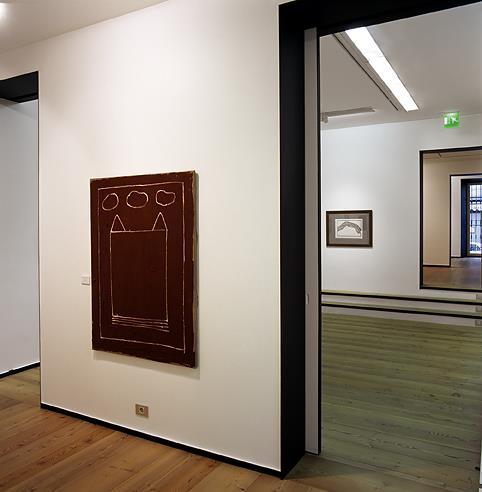
Primera exposición de Joan Hernández Pijuan en la galería, 2004. First exhibition of Joan Hernández Pijuan at the gallery, 2004.
Conocí a Joan Hernández Pijuan (Barcelona, 1931-2005) a mediados de los noventa y desde entonces he tenido la oportunidad de organizar tres exposiciones con su obra. Inauguramos la galería con una magnífica selección de sus trabajos sobre papel en 2004, que se acompañó con la publicación de un catálogo. En 2015 realizamos una nueva muestra conmemorando los diez años de su fallecimiento, y posteriormente en 2018, pusimos su obra en papel en diálogo con los coloridos lienzos del pintor costarricense Federico Herrero.
Nunca he parado de admirar su trabajo, y sin ser un erudito, cuanto más lo observo, más me llaman la atención sus cuadros donde el espacio y el vacío son los protagonistas. Quienes siguen la programación de nuestra galería sabrán la importancia que le damos a las paredes vacías, y por eso en esta ocasión hemos seleccionado un conjunto de obras de este pintor catalán donde este elemento se evidencia con más fuerza.
Mientras todos, creadores o no, tratamos de llenar el silencio con palabras, el lienzo con formas o el papel con letras, el propio Hernández Pijuan aspiraba a “convertir el espacio en algo que uno mira”, como si hubiera conseguido capturar en sus lienzos ideas y conceptos tan abstractos como el aire, el silencio o la nada.
Esta exposición se complementa a su vez con un solo show de una joven pintora franco-británica con la que la galería ha comenzado a colaborar de forma muy reciente: Galina Munroe.
Recuerdo que en una de las veces que me reuní con Hernández Pijuan para almorzar, me dijo que si tenía inconveniente en que viniera acompañado de un joven artista cuyo nombre no alcanzo a recordar. Me sorprendió que alguien con su trayectoria dedicara su tiempo a guiar a artistas más jóvenes que se encontraban dando sus primeros pasos por este mundo nada fácil. Es por eso que hemos querido complementar su exposición con la primera muestra en la galería de obras de esta joven artista que descubrí hace unos años y que, siendo su trabajo muy diferente al de Hernández Pijuan, en su espontaneidad y capacidad de síntesis indudablemente me recordó al Maestro.
I first met Joan Hernández Pijuan (Barcelona, 1931-2005) in the mid-nineties and since then I have had the opportunity to organize three exhibitions of his work. We opened this gallery with a magnificent selection of his work on paper in 2004, and accompanied that exhibition with the publication of a catalogue. In 2015 we held a new exhibition commemorating the tenth anniversary of his death, and later in 2018, we put his work on paper in dialogue with the colourful canvases of the Costa Rican painter Federico Herrero.
I have never stopped admiring his work, and without being an authority, I am aware that the more I observe it, the more I am attracted by those paintings of his in which spaces and voids are the protagonists. Those who follow the programming of our gallery will know the importance we give to empty walls, and for this occasion we have selected a set of the works by this Catalan painter in which this element is most strongly evident.
While all of us, creators or not, try to fill silences with words, canvases with forms or paper with letters, Hernández Pijuan himself aspired to "turn space into something that one looks at", as if he had managed to capture on his canvases ideas and concepts as abstract as air, silence or nothing.
This exhibition is in turn complemented by a solo show from a young FrancoBritish artist with whom the gallery has recently begun to collaborate: Galina Munroe.
I remember that on one of the times that I met Hernández Pijuan for lunch, he asked me if I would mind if he came accompanied by a young artist whose name I can't remember. I was surprised that someone with his background would dedicate his time to guiding younger artists who were taking their first steps in this far from easy world. That is why we wanted to complement his exhibition with our gallery’s first showing of works by this young artist whom I discovered several years ago, with work that is very different from that of Hernández Pijuan and yet which, in its spontaneity and capacity for synthesis, undoubtedly reminded me of the Maestro.

Exposición conmemorativa por el 10ª aniversario, 2015. Commemorative exhibition for the 10th aniversary, 2015.






Llindarsocre, 1989
Óleo y esmalte sobre tela 95 x 212 cm
NápolsIllapis , 1988
Óleo sobre lienzo
16 x 27 cm
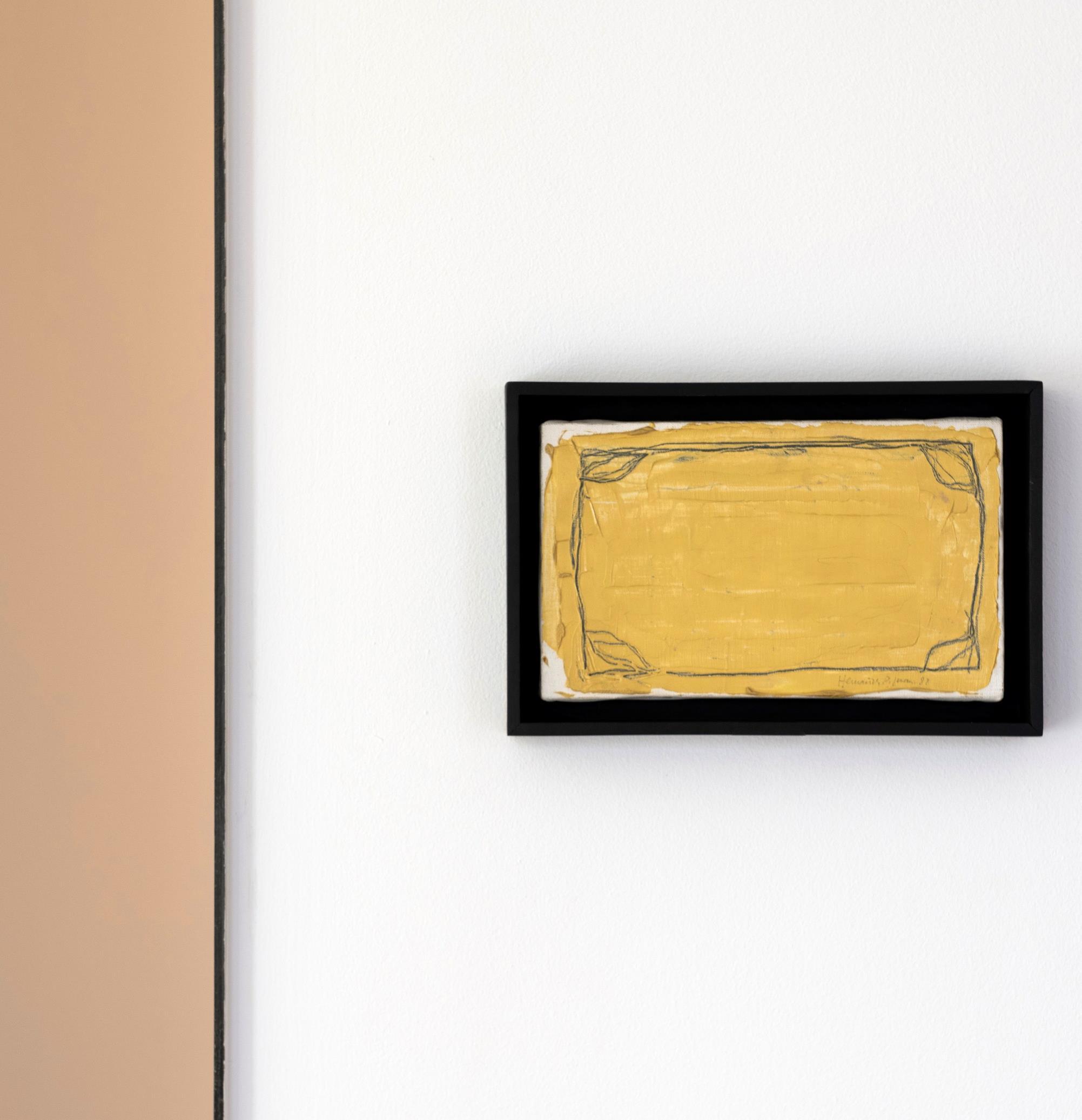

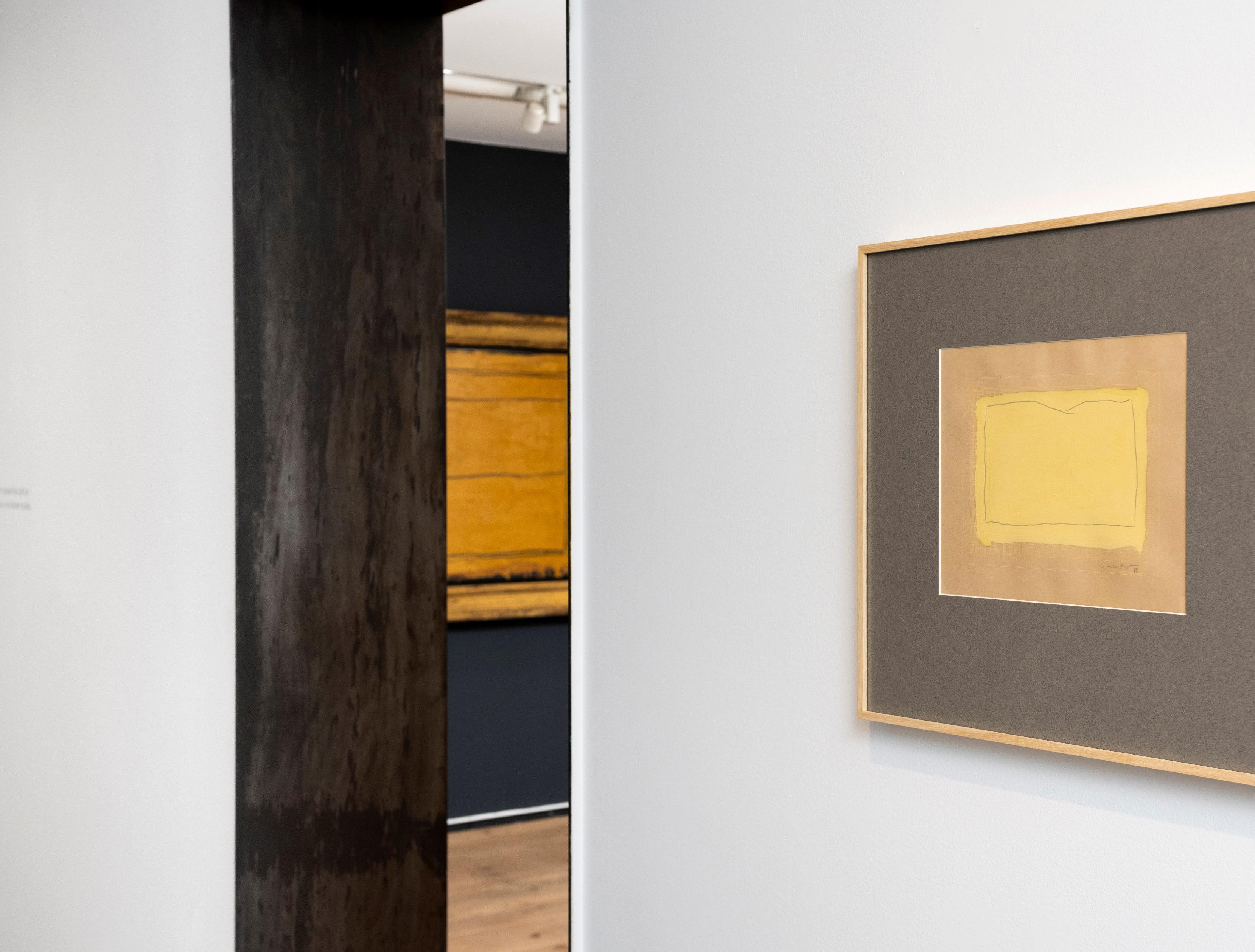

Esbòs9(sèriecases),1988
Gouache sobre papel milimetrado 23 x 28.5 cm
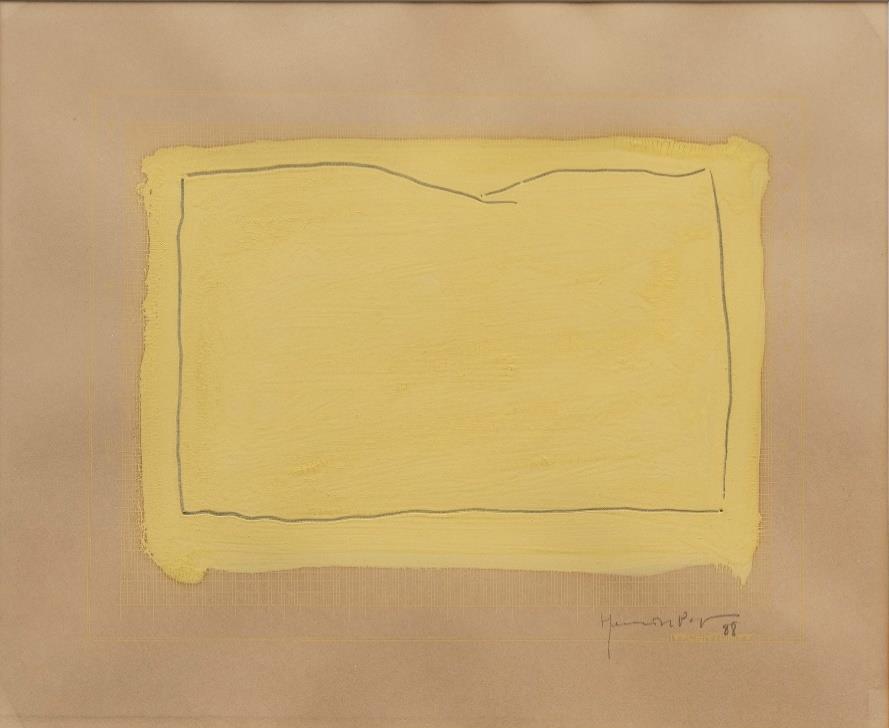
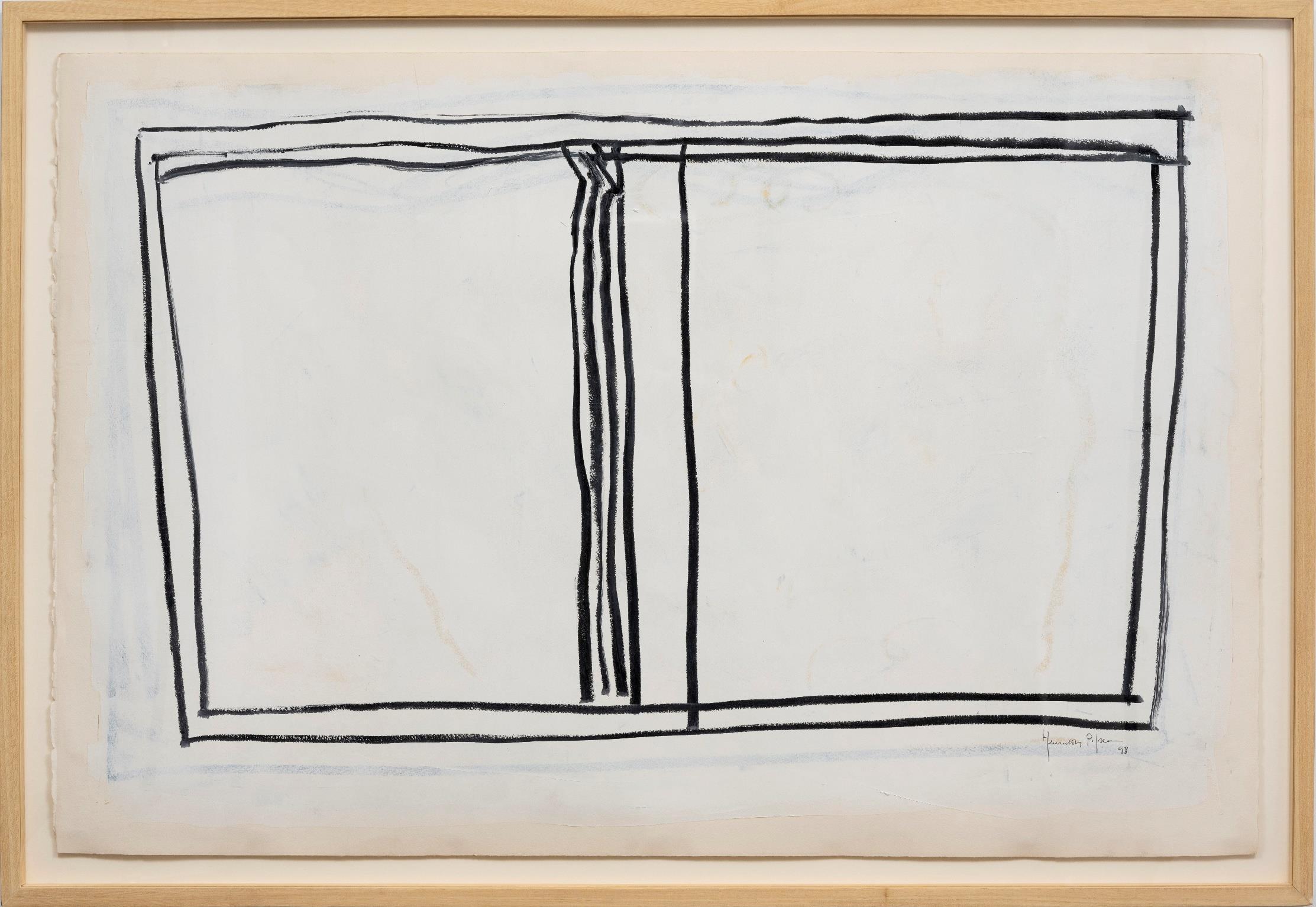

título,1998
mixta sobre papel
121 cm
“Los cuadros se parecen a quién los pinta: los míos andan despacio y no hacen ruido”.
“Paintings are the same as the person who paints them: mine walk leisurely, without making to much noise”.
Joan Hernández Pijuan





Sintítulo , 1998
Gouache sobre papel Arches 16.5 x 24 cm
Paisatgevestitdeblanc,1999
Óleo y esmalte sobre tela
180 x 150 cm

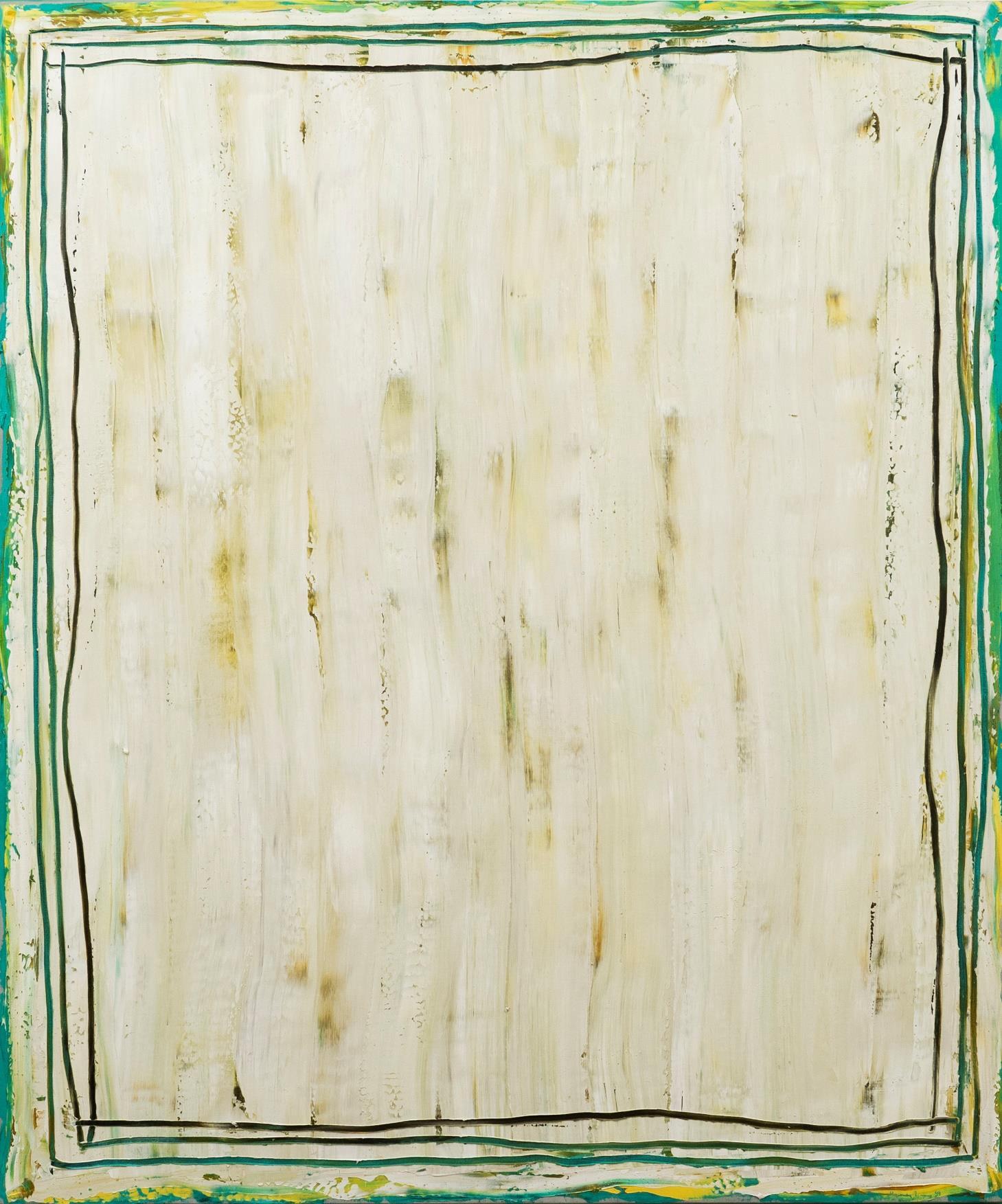

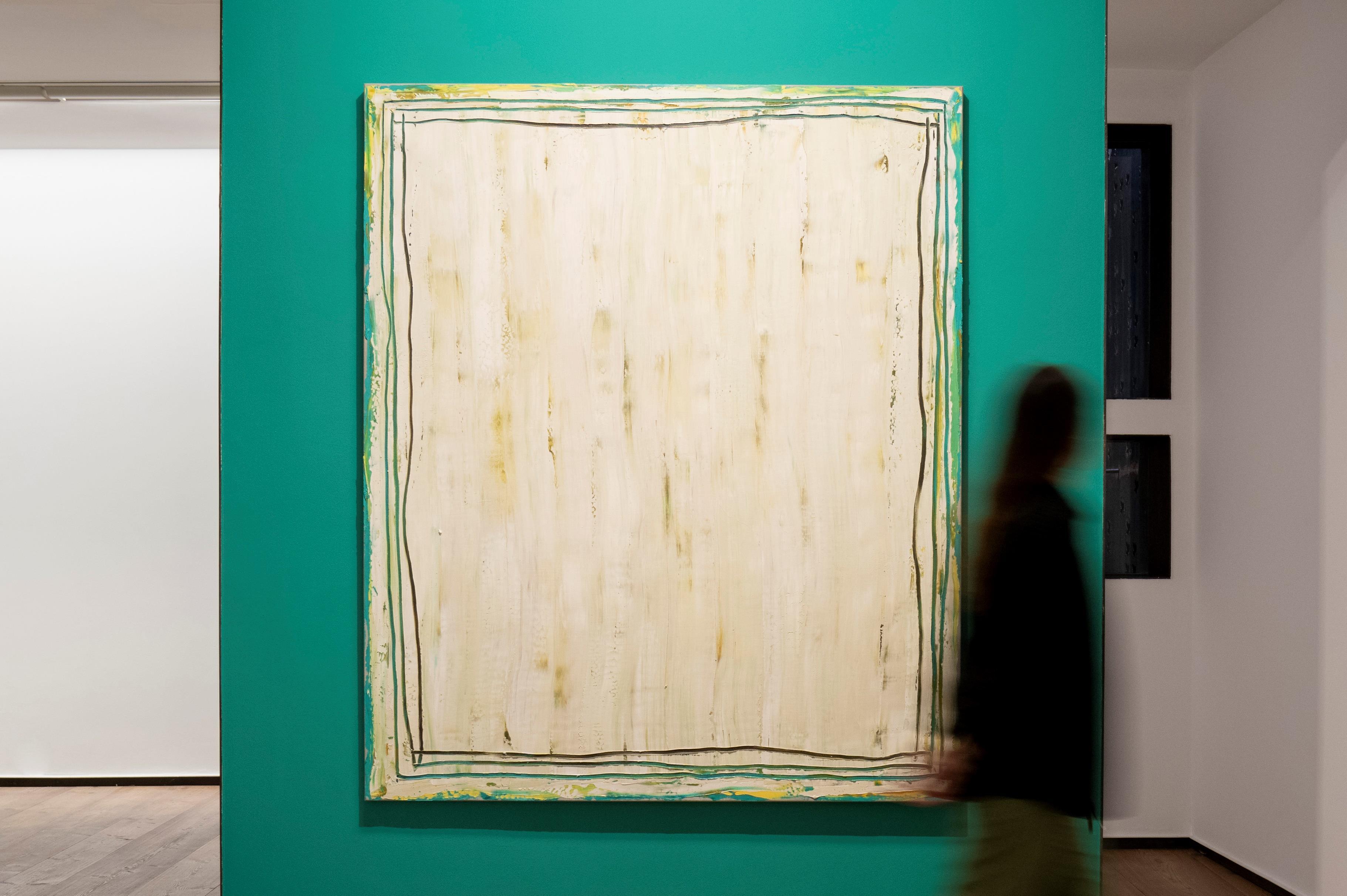
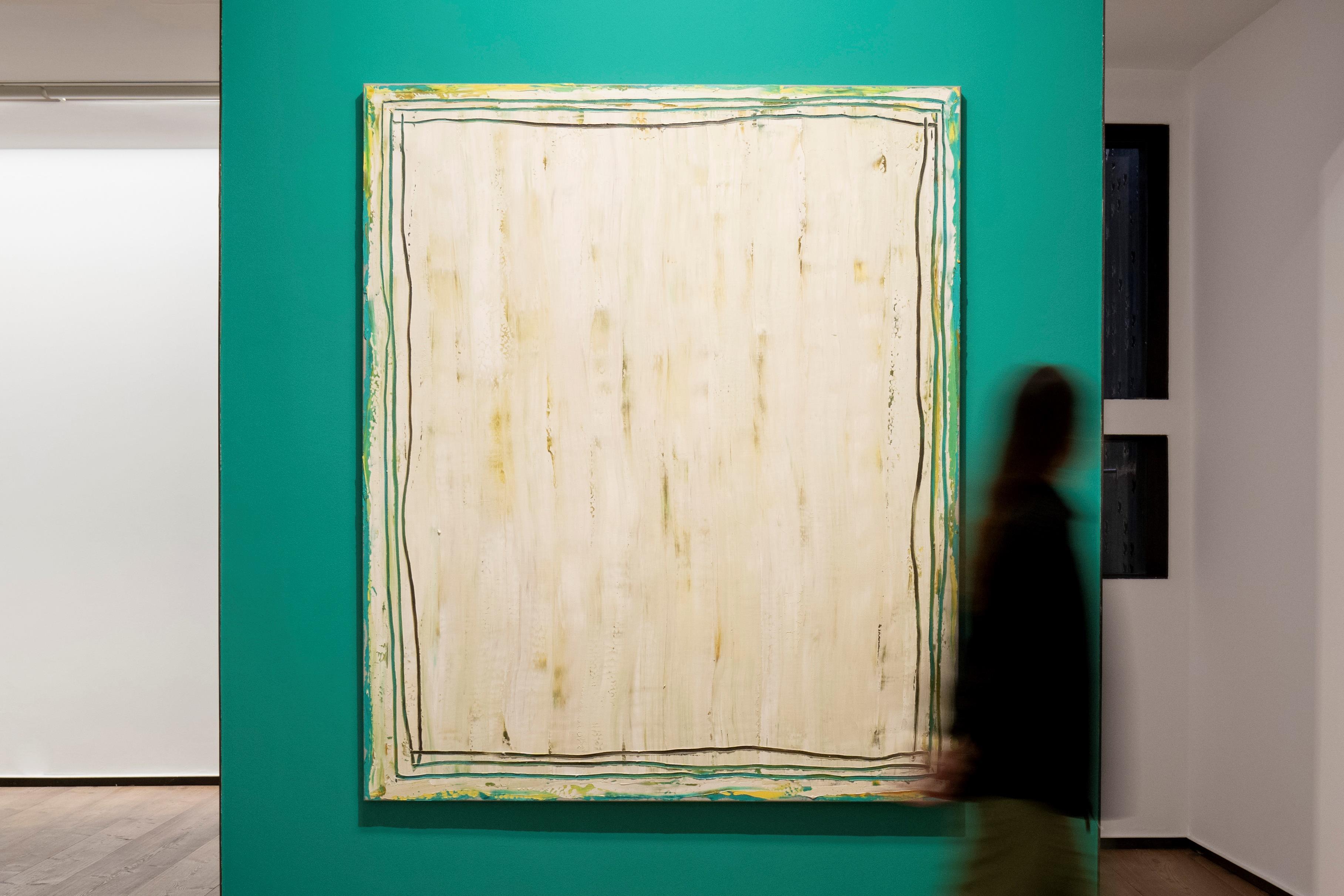
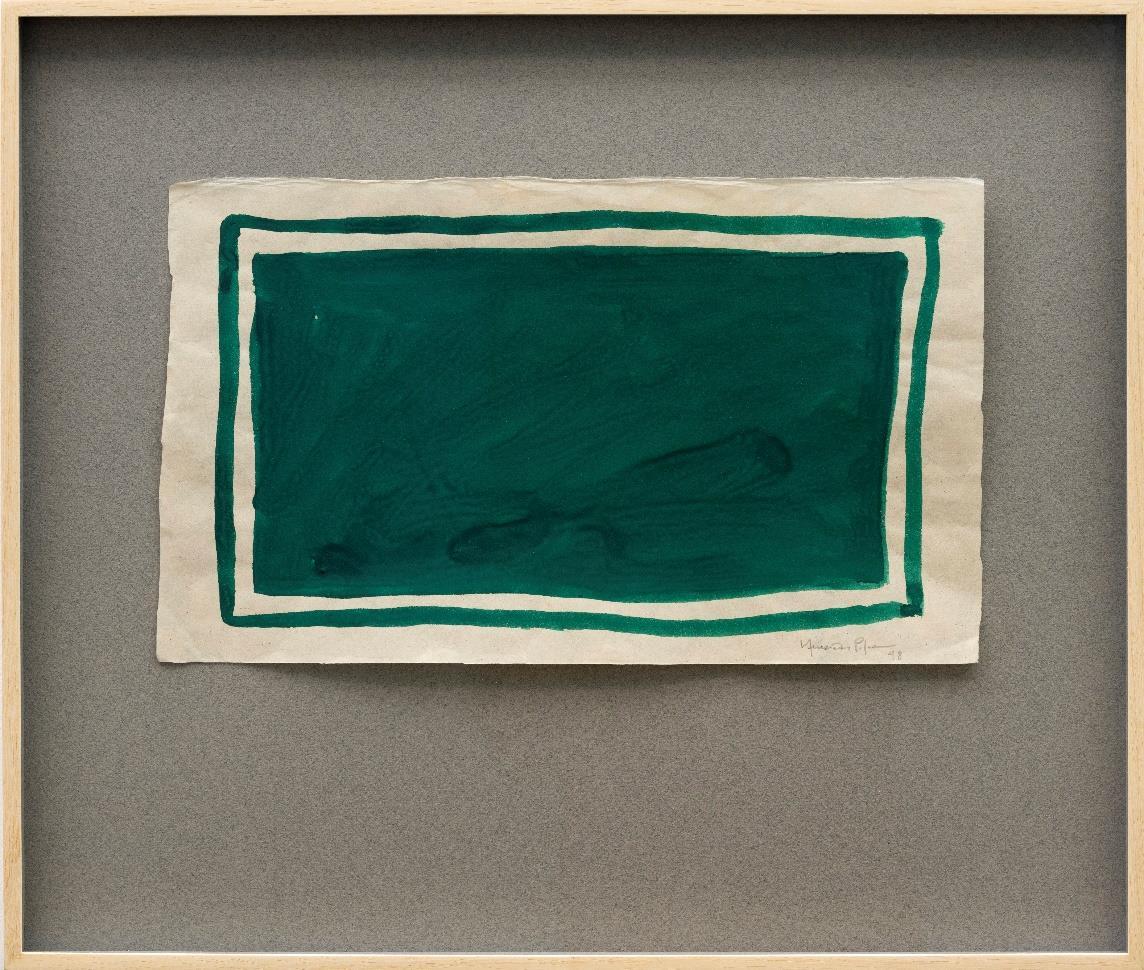



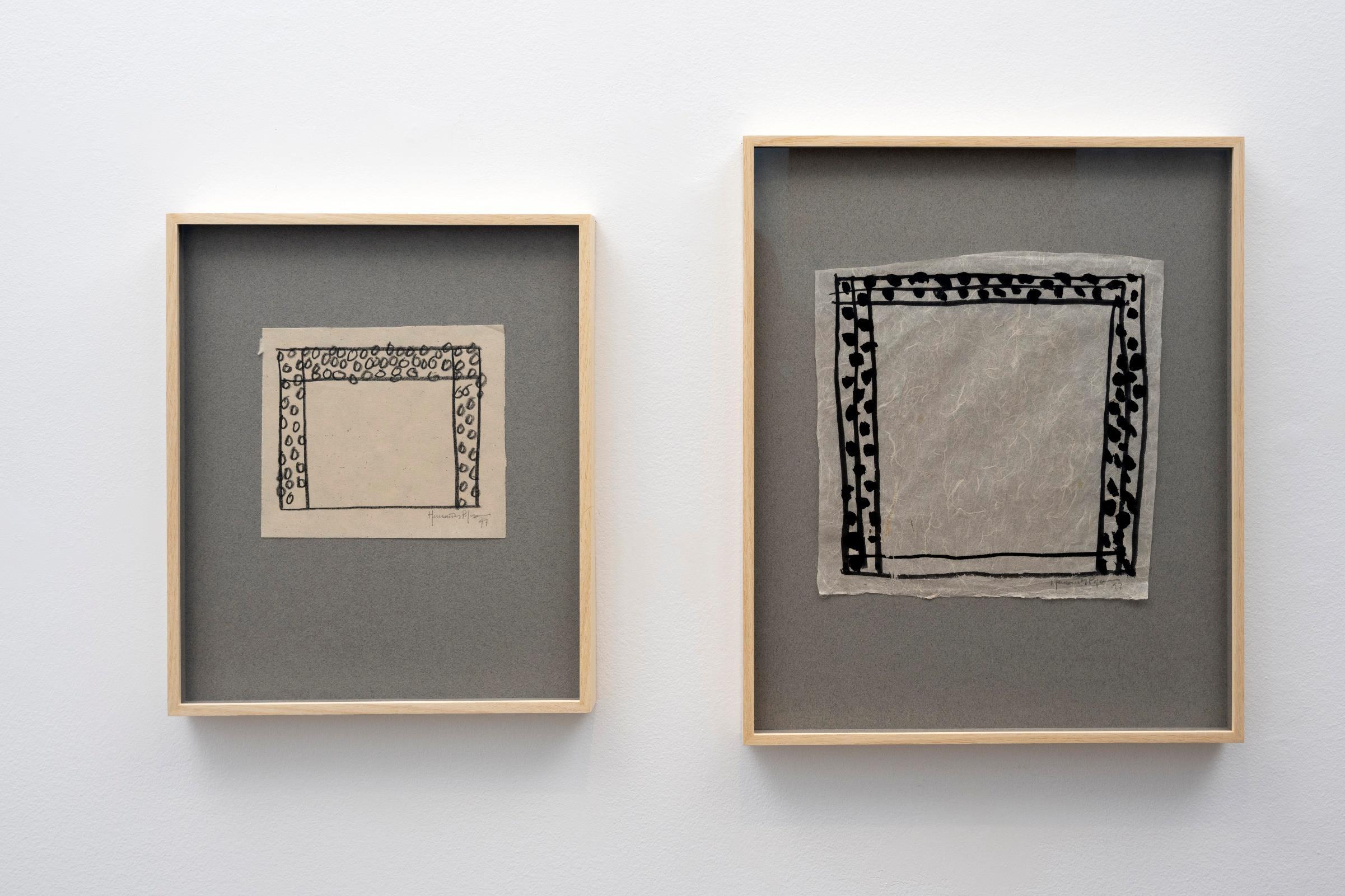
Sintítulo , 1997
Gouache sobre papel Japón
16 x 18.4 cm
Sintítulo , 1997
Gouache sobre papel Japón
26.5 x 26.5 cm

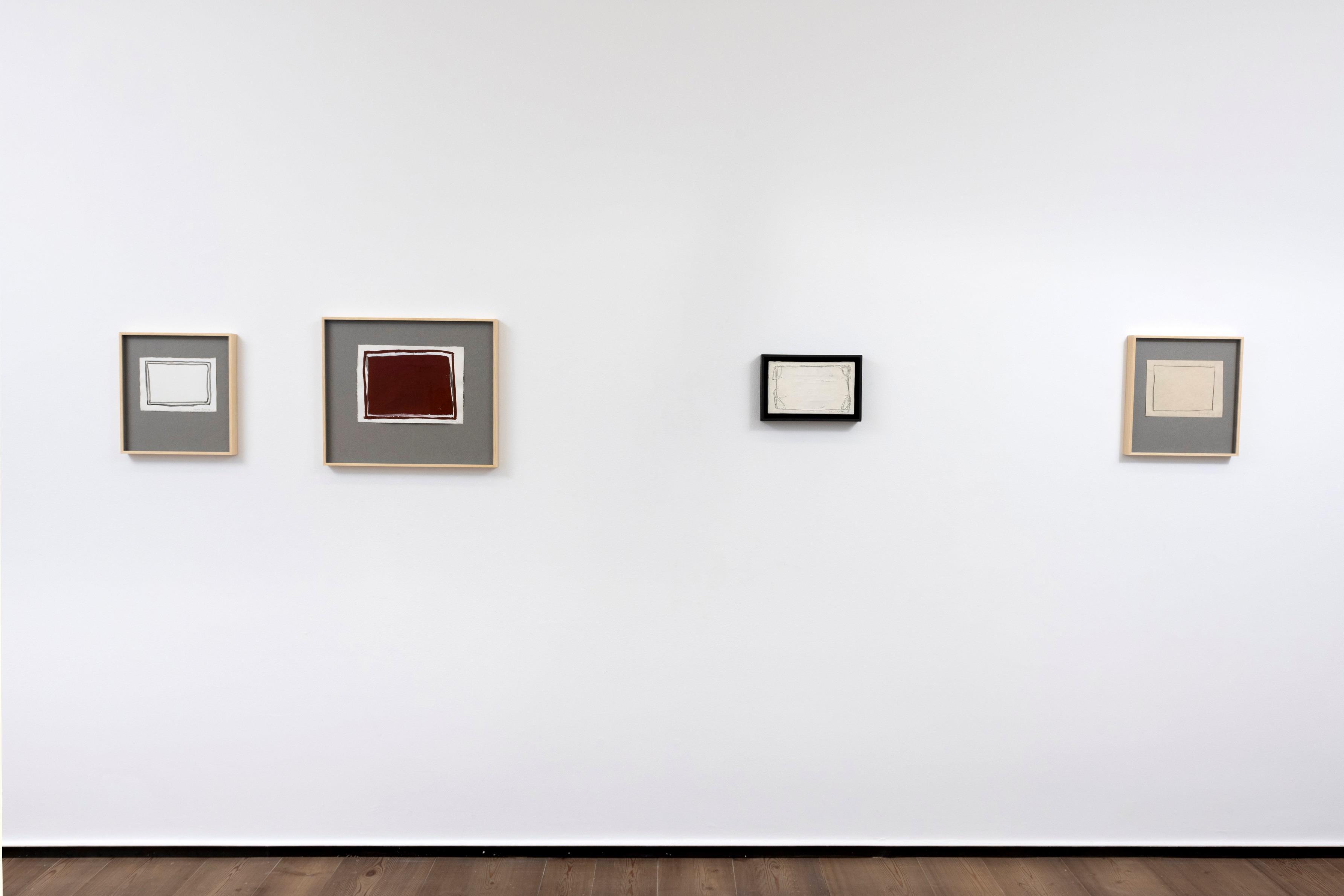

“Siempre intento cerrar los cuadros por los limites”.
Joan Hernández Pijuan
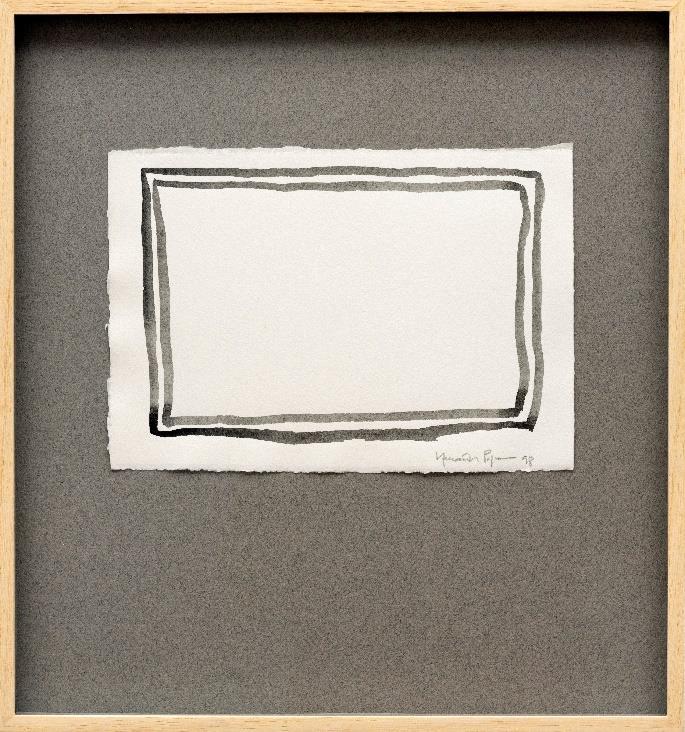
Sintítulo , 1998
16.5 x 24 cm

Sintítulo , 1998
Gouache sobre papel Japón 24 x 32.2 cm
“I always try and close off my paintings at their limits”.
Joan Hernández Pijuan

BlancIllapis,1988
16

Sintítulo , 1997
17.7 x 24.7 cm


Barcelona, 1931

Joan Hernández Pijuan se formó en la Escola d’Arts i Oficis de la Llotja y la Escola de Belles Arts de Barcelona. En 1957 se trasladó a París, donde estudió grabado y litografía en la École de Beaux-Arts.
Si bien en sus inicios se situó cerca de un expresionismo gestual, pronto adoptaría una figuración geométrica dominada por campos de color y por la presencia de objetos solitarios como frutas, copas, huevos o tijeras. El color, tratado con gran elegancia y misticismo, fue siempre uno de los protagonistas de su obra. Sobre fondos lisos y fajas de colores grises y verdes, Hernández Pijuan incorporaba elementos y referencias matemáticas como cuadrículas o cintas métricas. Las franjas de colores, la gradación tonal, las transparencias, las texturas y las resonancias de luz son elementos propios del trabajo del artista, a los que en los años ochenta se añadieron formas como el perfil de un ciprés, los surcos del arado o la silueta de una hoja, sin abandonar nunca la abstracción.
A finales de los ochenta, Hernández Pijuan retomó el informalismo desarrollando una pintura que acabó caracterizándose por el uso de una paleta exclusivamente en blanco y negro. Con una obra atmosférica y de gran austeridad, el artista transforma la pintura en un ejercicio de espiritualidad y contemplación interior. Destaca también su faceta de grabador, con un cuidado trabajo de la trama y del elemento seriado, también monocromático.
Desde su primera exposición individual en el Museu de Mataró en 1955, expuso en espacios de arte de España y del ámbito internacional. Entre las retrospectivas dedicadas al artista, cabe destacar las del Centre Cultural Tecla Sala de L’Hospitalet de Llobregat (1992), Museo Reina Sofía de Madrid (1993), MACBA de Barcelona (2003) y Museo de Arte Moderno de Moscú (2011). Su obra se encuentra en colecciones como las del Palais des Beaux-Arts de Bruselas, Guggenheim Museum de Nueva York, National Gallery de Montreal, Museo de Arte Moderno de Buenos Aires, Museo Reina Sofía de Madrid y MACBA de Barcelona.
Joan Hernández Pijuan, a leading figure in Catalan and Spanish minimalism in the latter part of the 20th century, studied at Barcelona’s Escola d’Arts i Oficis de la Llotja and Escola de Belles Arts, before moving to Paris in 1957, where he studied engraving and lithography at the École des Beaux-Arts.
Although his early work was close to gestural expressionism, he soon adopted a geometric figuration dominated by colour fields and by the presence of solitary objects such as fruit, glasses, eggs and scissors. Treated with elegance and mysticism, colour was always central to his work. On a smooth ground with passages of grey and green, Hernández Pijuan incorporated elements and mathematical references such as grids or metric tapes. Colour strips, tonal gradation, transparencies, textures and resonant light are all elements that typify the artist's work, which in the eighties incorporated elements such as the profile of a cypress tree, the furrows of the plough or the shape of a leaf, without ever abandoning abstraction. In the late eighties, Hernández Pijuan returned to Informalism, eventually developing a style of painting characterised exclusively by the use of a black-and-white palette. Atmospheric though austere, the work becomes an exercise in spirituality and inner contemplation. He also continued his work as a printmaker, producing carefully executed, monochromatic grids in series.
Following his first solo exhibition at the Museu de Mataró in 1955, he exhibited throughout Spain and internationally. His numerous retrospectives include those at the Centre Cultural Tecla Sala, Hospitalet de Llobregat (1992), Museo Reina Sofía, Madrid (1993), MACBA, Barcelona (2003) and Museum of Modern Art, Moscow (2011). His work features in the collections of Palais des Beaux-Arts, Brussels; Solomon R. Guggenheim Museum, New York; National Gallery, Montreal; Museo de Arte Moderno, Buenos Aires; Museo Reina Sofía, Madrid; and MACBA, Barcelona, among others.


ESTE CATÁLOGO DE
HA SIDO REALIZADO CON MOTIVO DE LA EXPOSICIÓN CELEBRADA EN LA GALERÍA RAFAEL PÉREZ HERNANDO
ENTRE LOS MESES DE SEPTIEMBRE Y NOVIEMBRE DE 2023.

